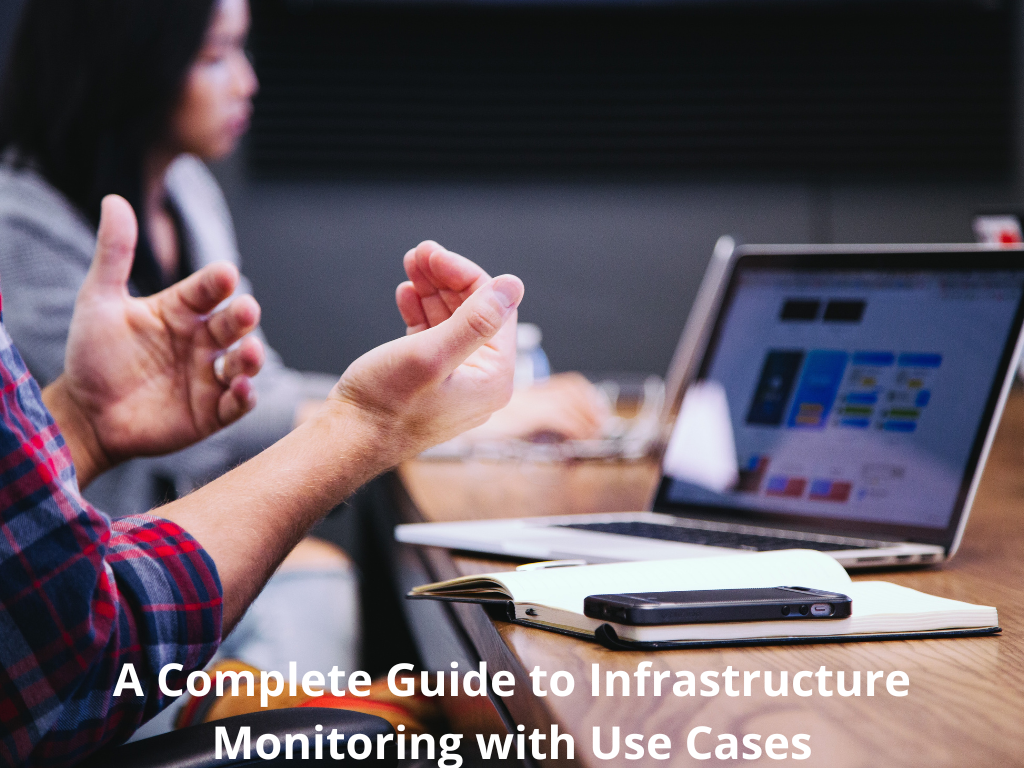As an administrator of a business application, you must ensure that your visitors have a positive experience when they visit your site. If your application is down, or they can’t access the data they’re looking for, they will not stick around for long. That’s why it’s crucial to have a good infrastructure monitoring solution in place.
An organization’s infrastructure monitoring is vital for its success, and you must monitor it regularly. Now, you might wonder what infrastructure monitoring is and how it can benefit your business operation. In this article, we’ll look at infrastructure monitoring, some of its different use cases, and the complete detailed guide on infrastructure monitoring.
What is Infrastructure Monitoring?
Infrastructure monitoring is accumulating and analyzing IT infrastructure, systems, and processes data. The motive of doing this is to enhance business outcomes and drive values for the organization with the help of insightful data. Most people think of monitoring as gathering data about their infrastructure.
While that is a critical monitoring function, it is not the only one. Monitoring is also about using that data to improve the performance of your infrastructure. In other words, monitoring is about proactive problem-solving.
Why is Infrastructure Monitoring Important?
Infrastructure monitoring is essential for a variety of reasons. It can help identify issues with servers, network connectivity, and other vital components of your infrastructure.
Additionally, it can provide insights into how your infrastructure is being used and performing. This information can be used to improve the efficiency and effectiveness of your infrastructure.
Key Features of a Good Infrastructure Monitoring Tool
There are many factors to consider when choosing an infrastructure monitoring tool. Here are some key features to look for:
- Ease of use: The monitoring tool should be easy to set up and use. It should have a user-friendly interface that makes navigating and finding the information you need easy.
- Comprehensive coverage: The tool should cover all aspects of your infrastructure, including server performance, network activity, and application health. It should also provide detailed reports that give you visibility into potential problems.
- Flexibility: The monitoring tool should be flexible and scalable to grow with your infrastructure. It should be able to monitor multiple servers and devices and support a variety of protocols and technologies.
- Automatic alerts: The tool should automatically generate alerts when it detects problems with your infrastructure. These alerts should be customizable so you can choose which ones you want to receive and how you want to be notified (e.g., by email, text message, or push notification).
- Integration with other tools: The monitoring tool should integrate with other tools, such as configuration management tools, ticketing systems, and reporting tools. This will help.
Use Cases for Infrastructure Monitoring
There are many different types of infrastructure, from physical servers to cloud-based services, and each type has its unique challenges. When it comes to monitoring your infrastructure, there are a variety of different use cases that you can take advantage of. Some of those use cases are as follows:
- One everyday use case is identifying capacity issues. For example, if you’re constantly running out of disk space or CPU resources, that’s a sign that you need to add more capacity. Monitoring can help you identify when you’re starting to run low on resources so you can add more before it becomes a problem.
- Another everyday use case is detecting and diagnosing problems. For example, if something goes wrong with your infrastructure, you need to identify the root cause to fix it quickly. Monitoring can help you provide visibility into all aspects of your infrastructure to narrow down the problem area quickly.
- Infrastructure monitoring is also essential for securing Security breaches. This is becoming increasingly important as cyber-attacks become more sophisticated and prevalent. By monitoring your infrastructure for signs of unusual activity, you can help to protect your data and systems from being compromised.
- Finally, another helpful use case for infrastructure monitoring is capacity planning. This involves understanding how much traffic your system can handle and ensuring that you can meet future demand. This can help you avoid downtime and ensure that your customers always have a positive experience.
These are just a few of the many use cases for infrastructure monitoring. So, start monitoring your organization’s infrastructure and identify the potential issues before they cause serious trouble to your business operations.
Best Practices For Infrastructure Monitoring
Monitoring your infrastructure is critical to ensuring the availability and performance of your applications. There are various tools and techniques available to help you monitor your infrastructure, and we’ll explore some of the best practices for infrastructure monitoring.
- One of the most critical aspects of monitoring is establishing appropriate baselines for metric data. This will help you identify when there are abnormal changes in performance or availability. Once you have set baseline data, you can configure alerts to notify you when there are deviations from the norm.
- Another important consideration is identifying which metrics are most important to your applications and services. Of course, not all metrics are created equal, and it’s essential to focus on those that will give you the most visibility into the health of your system. Depending on your application, this could include CPU utilization, memory usage, disk IO, or network traffic.
- Finally, it’s also important to consider how you will collect and store your metric data. Again, various tools are available to help with this, and choosing one that will scale your infrastructure growth is essential.
Conclusion
Infrastructure monitoring is an essential part of any organization’s IT operations, as it provides visibility into the health and performance of your system. Using a professional tool, you can proactively identify and resolve issues before they cause downtime or impact business operations.
In addition, a comprehensive infrastructure monitoring solution will help you optimize performance, avoid outages, and ensure that your system is always running at peak efficiency.
See More:
